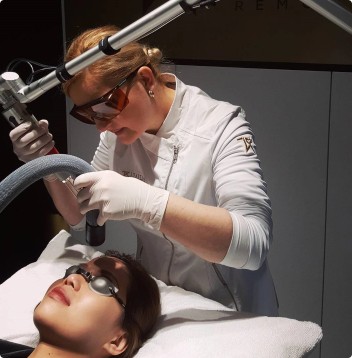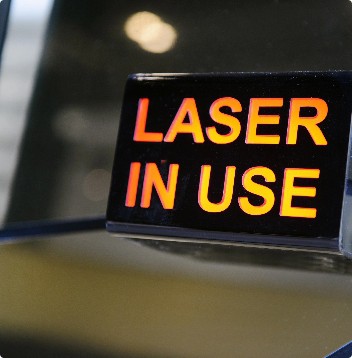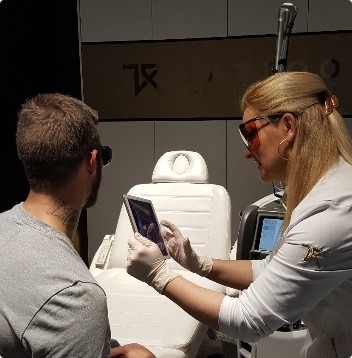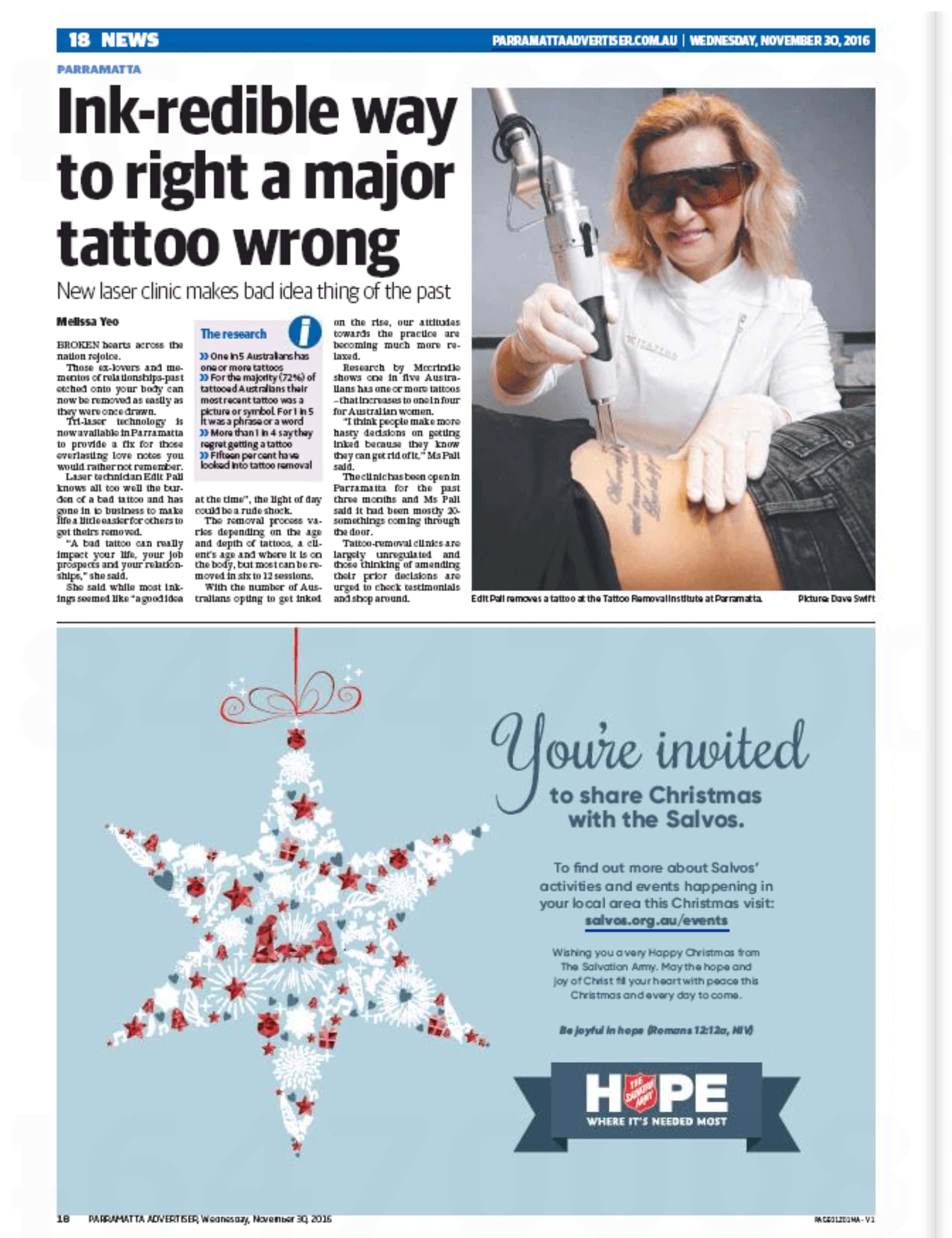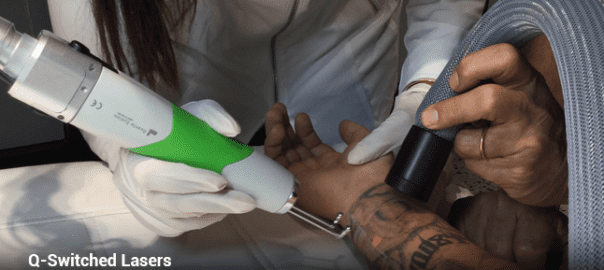After laser treatments, the common effects can range from nothing at all to dry, itchy or blistering skin.
Just like the human body naturally sends signals for the blood to clot and form a scab as a defence against bacteria entering the open wound, blisters are a natural indication that everything is going well with the ink removal process from your skin.
This guide will discuss
- what to expect after a laser tattoo removal procedure,
- why blisters occur,
- the steps you should take if you succumb to blisters after your tattoo removal treatment, and
- laser tattoo removal aftercare.

What To Expect After Undergoing a Laser Tattoo Removal Process
The first session will usually produce the most significant side effects, but the more laser tattoo removal sessions you go to, the less severe they will be.
It’s crucial to be aware of what is normal and abnormal to know when and when not to panic (and seek medical assistance).
The Treated Area Immediately After
Swelling, redness, bruising, a warm sensation and sensitivity around the treated tattoo area are expected immediately after laser tattoo removal.
Your practitioner will have applied a bandage and laser aid gel to the treated area, and this should be left alone for 24 hours.
Fiddling with the bandage and scratching the skin if it has a tingling or itchy sensation will irritate the skin more.
Between 8 and 72 Hours After
Blisters or scabs might appear on the treated area between 8 and 72 hours after laser tattoo removal. They may last up to two weeks, and you may be limited to activities during this time
Why Do Laser Tattoo Removal Blisters Occur?
During the tattoo removal process, the laser is projecting intense heat onto the treated area to cause the tattoo ink particles to disintegrate. As those particles disrupt, so do the surrounding blood vessels.
Blisters occur when your body produces fluids within your skin. In this case, the skin is excreting water and tattoo ink.
The point of laser tattoo removal is to remove the colour tattoo pigment from the skin. So, your skin secreting the ink is a good thing.
Tattoo removal blisters have nothing to do with the myth about it being a burn wound.
Blisters are a sign that your body is reacting well to the laser treatment to remove the tattoo and is taking its natural course.
The closer the tattoo is to your heart, the more blood it receives. Tattoos on hands and feet receive the least amount of blood circulation, so they are more likely to blister. Tattoos on the chest might not even have any blistering at all.
How To Treat Laser Tattoo Removal Blisters
Blistering can occur from 8 hours after undergoing laser removal treatment.
These are the aftercare instructions we suggest after each laser tattoo removal session:
- Apply ice packs to the treated area immediately to reduce discomfort, and elevate the area if possible.
- Apply antibacterial ointment to the skin regularly throughout the day and refresh the bandage or dressing as necessary, once per day minimum.
- Allow the blisters to pop and ooze naturally, rather than popping them prematurely yourself due to scratching or scraping. The excreted liquid from the blisters will crust and scab naturally as part of the healing process. Do not pick this off, as it might cause scarring. Continue applying antibacterial ointment to the affected area.
- Do not scratch or pick at the scabs. As the scabs begin to fall off naturally over time, you might notice your skin tone around the affected area discolouring slightly. This is only temporary, and it can take up to four weeks to heal. We also suggest using Vitamin E ointment to soothe itchiness on the skin.
Laser Tattoo Removal Aftercare Instructions
The First 48 Hours
During the first 48 hours after laser tattoo removal, apply cold compresses to the treated area as required.
The sooner you apply ice on the skin, the less likelihood of blistering.
If you are experiencing pain, take plain Tylenol (acetaminophen) rather than aspirin for pain relief. Aspirin should be avoided as it thins the blood and can increase bleeding.
Nurofen can be taken to help with inflammation
Topical Creams
Apply antiseptic ointment three times a day to the treated area for the first three days.
Keep the area fresh, clean, and dry, and change your dressing daily.
The only topical substance that should be placed on the affected skin is sunscreen every time you go out. But if you can avoid direct sun exposure - that would be best.
We also suggest avoiding:
- make-up;
- moisturising lotions;
- shaving the treated area.
Showering and Bathing
Feel free to shower as soon as two hours after treatment, but take care to not let the treated area get wet. Set it to a low-medium temperature rather than hot. Bringing your body temperature up will put the treatment to waste as your body will try to cool down too quickly.
This also applies to gyming or any activity that will bring your body temperature up.
Soaking in the bath, hot tub, sauna or swimming pool can increase the risk of infection.

Can Laser Tattoo Removal Blisters Result in Infection
Neglecting laser tattoo removal aftercare can result in infection, or even put the treatment to waste.
Open wounds run the risk of bacteria entering, and this is what causes infection.
If your blisters start oozing pus rather than water, they could be infected, and you should seek medical attention immediately.
While discomfort and itchiness on and around the treated area are expected, abnormal swelling and/or pain and a temperature above 38°C are also reasons to seek medical attention.
If you have any concerns or questions, call the tattoo laser clinic.
Key Takeaways
Laser tattoo removal blisters are no cause to be concerned.
Correct tattoo removal aftercare can prevent infection and scarring of the skin.
Allowing skin that underwent tattoo removal to go through its natural healing process will produce the best results.
Do not scratch, pick or pop. Apply antibacterial ointment regularly and leave the treated area alone.
At the Tattoo Removal Institute, we combine cutting edge technology with skin rejuvenating treatments. So not only do our clients see exceptional results, they do so over a shorter period of time, PLUS they experience fewer side effects.
Contact us today, and one of our specialists will happily assist you.
DISCLAIMER: The information contained herein should NOT be used as a substitute for the advice of an appropriately qualified and licensed physician or other health care provider. The information provided here is for informational purposes only. Please check with a physician if you have health questions or concerns about interactions or go to the TGA for a comprehensive list of TGA warnings. Although we attempt to provide accurate and up-to-date information, no guarantee is made to that effect.

